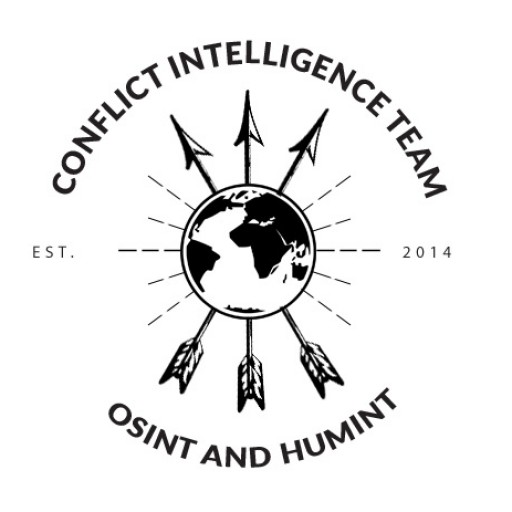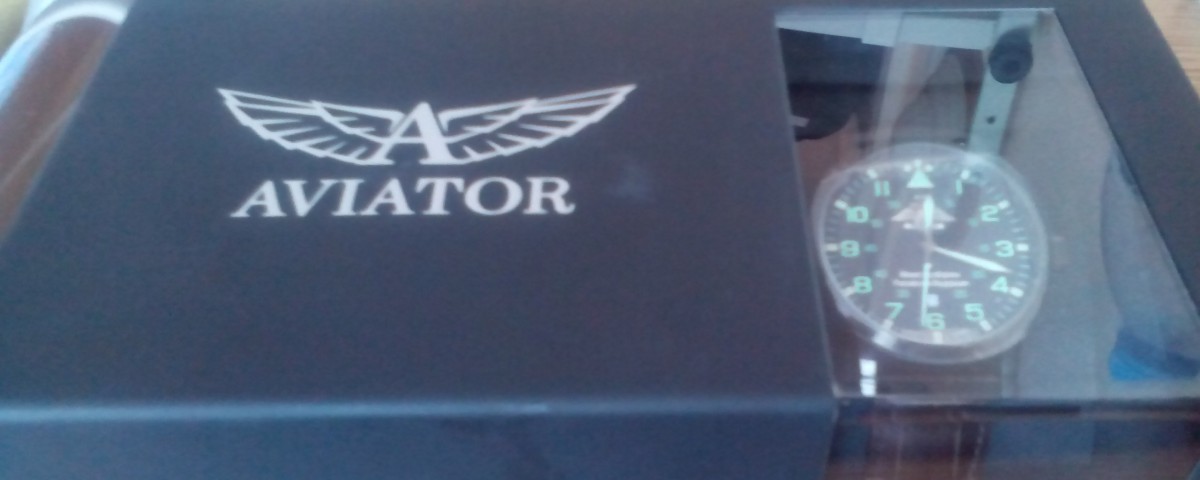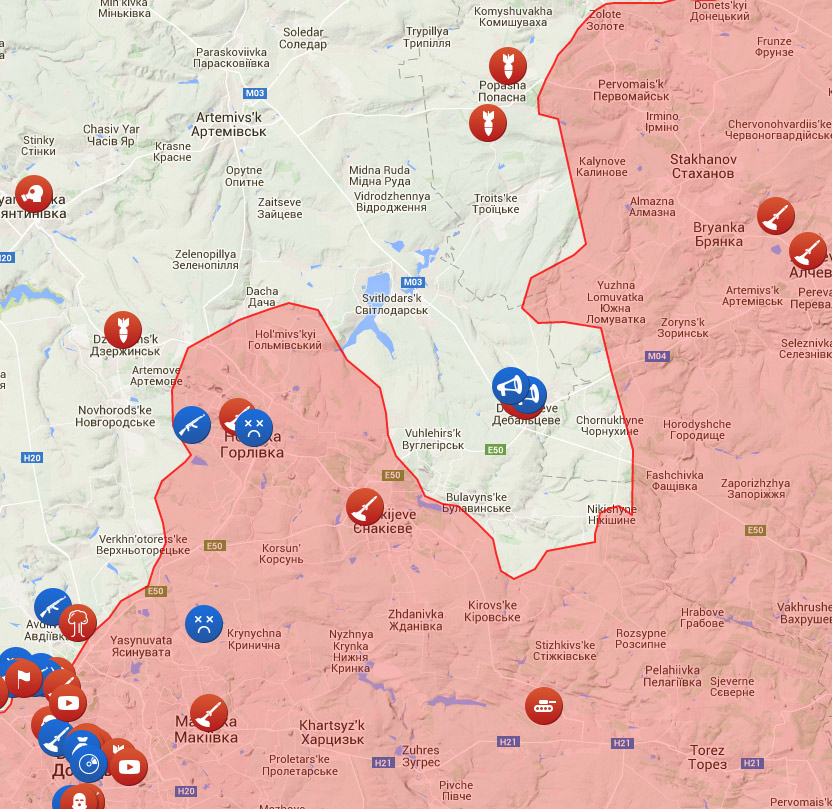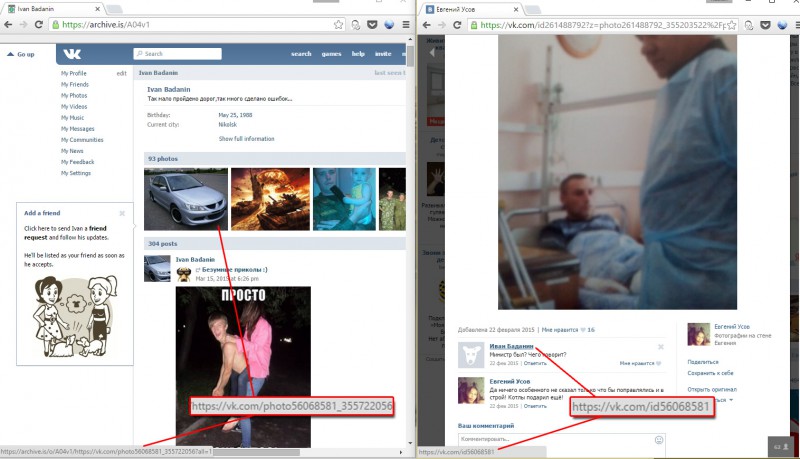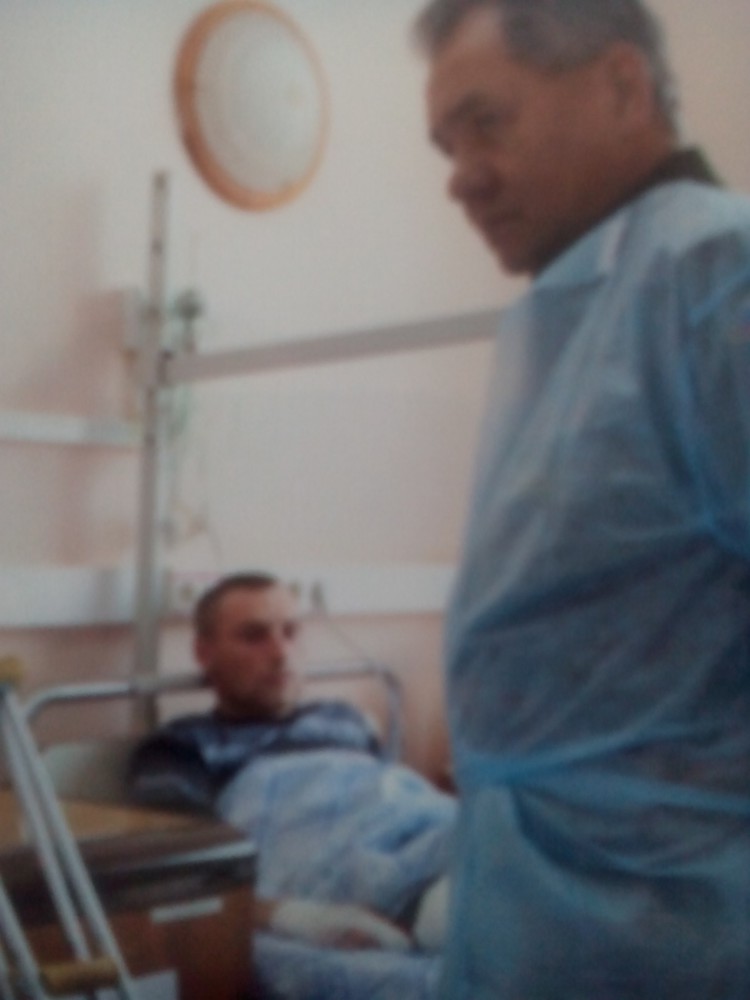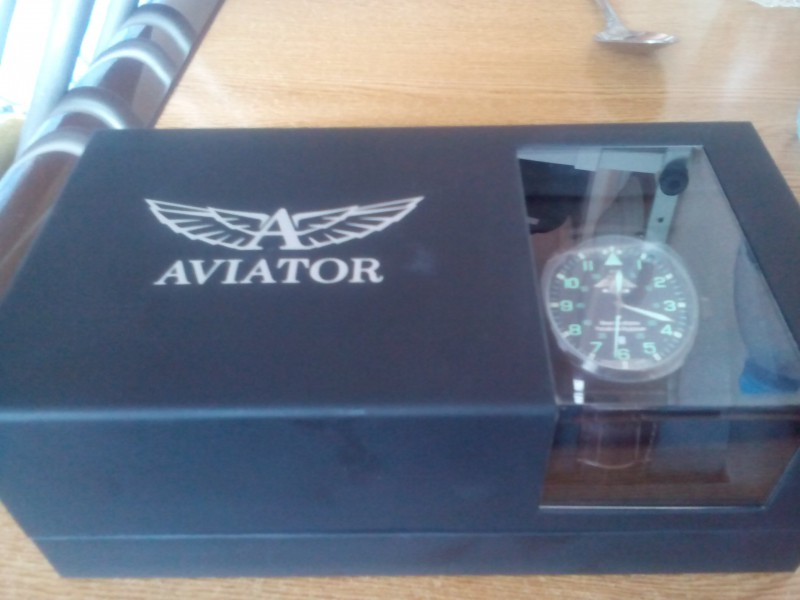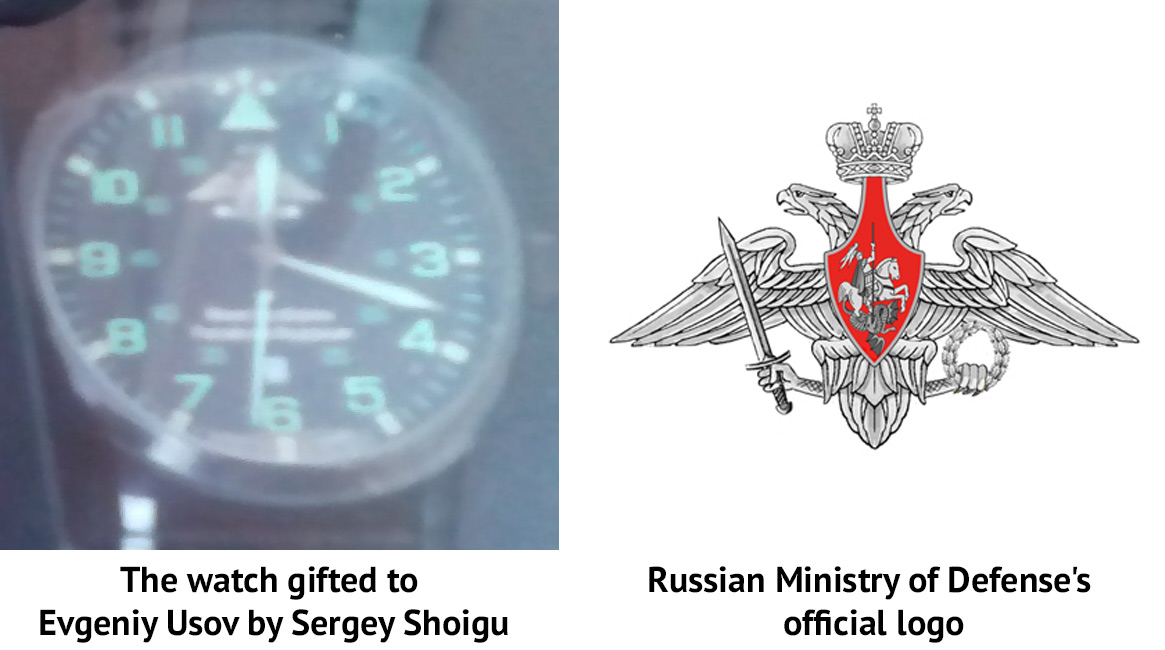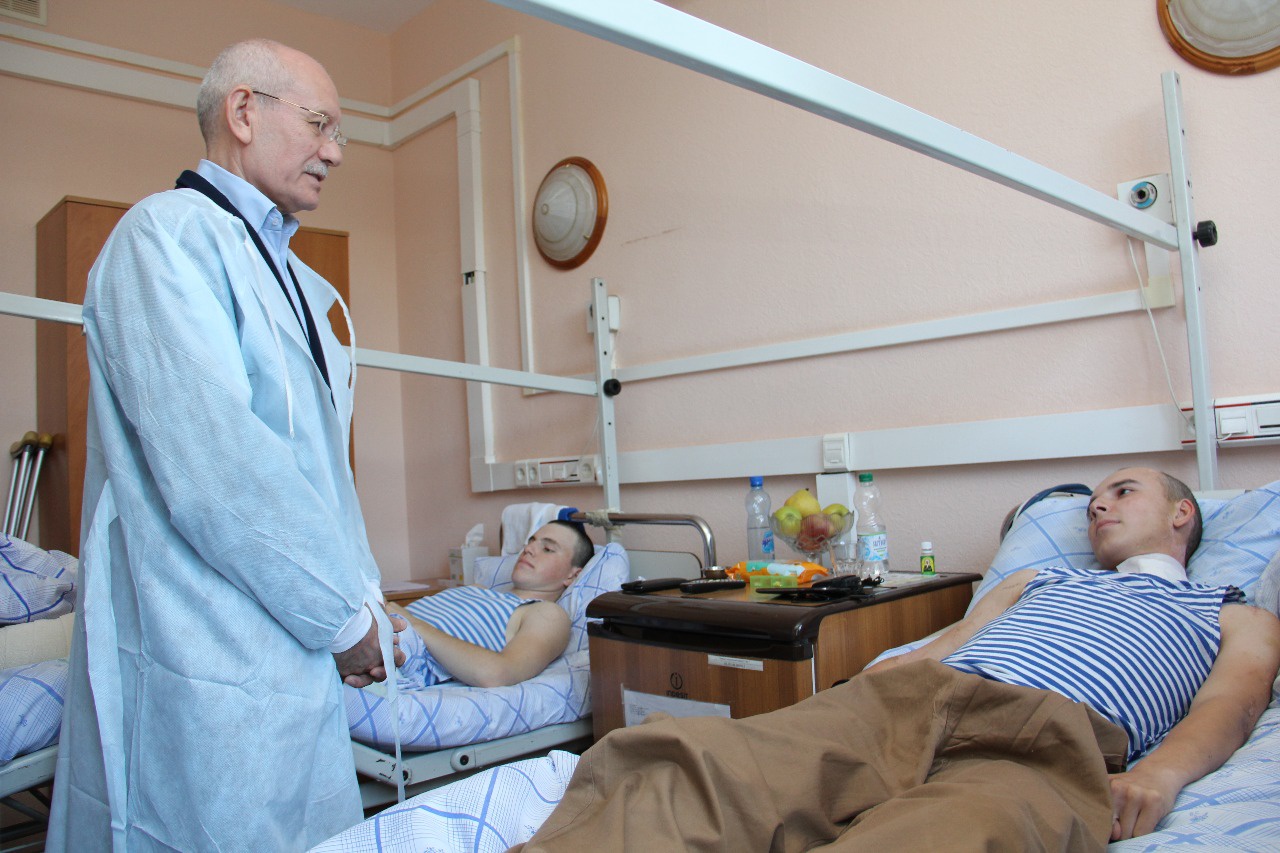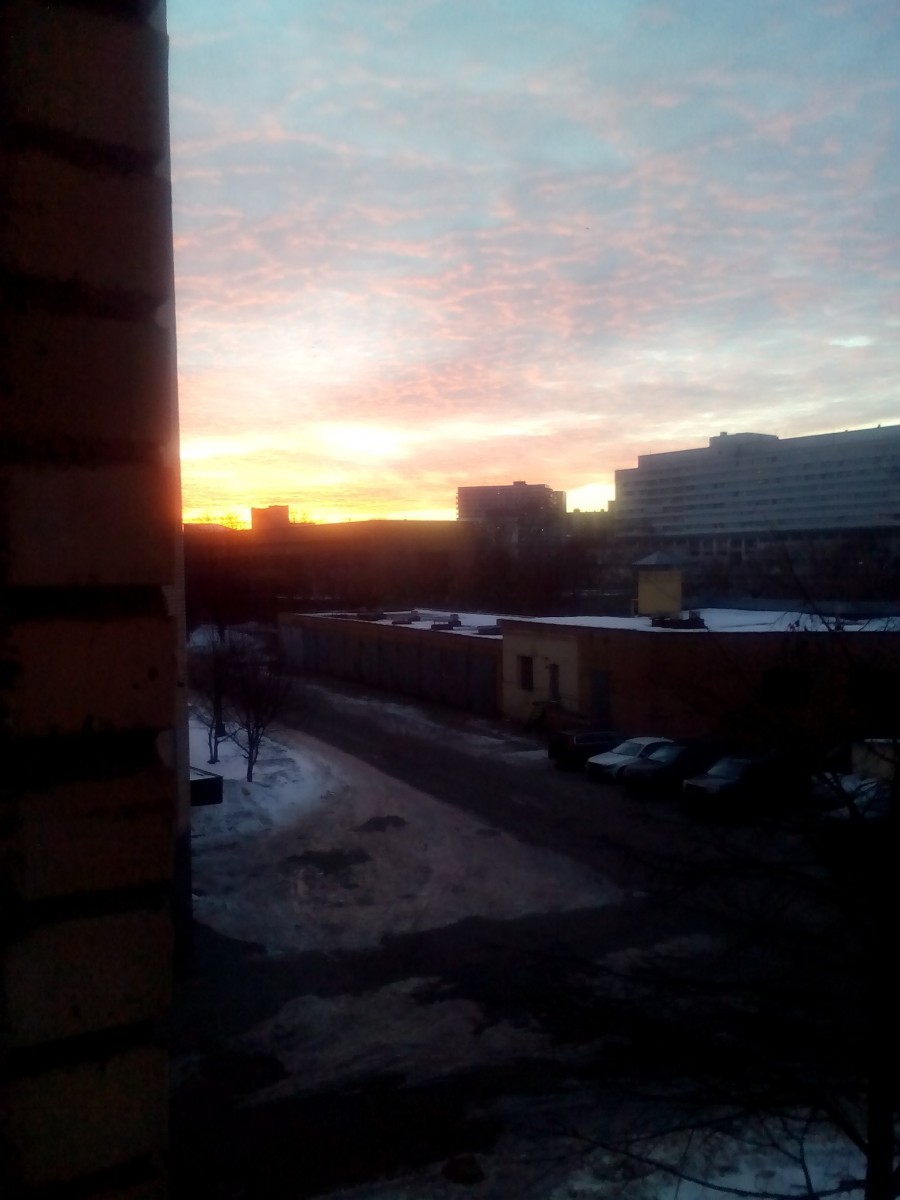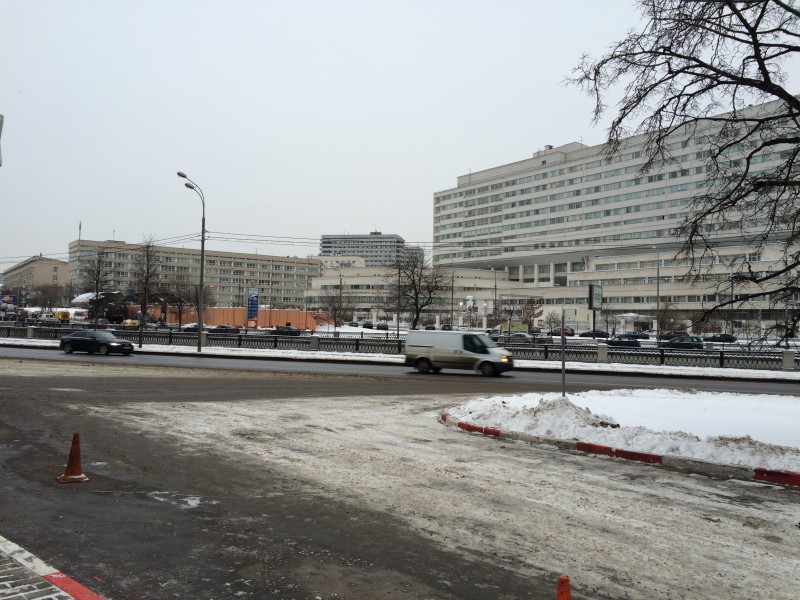This post is also available in:
 Русский
Русский
In February 2015, pro-Russian separatists aided by Russian troops took the strategic railway hub of Debaltseve in Eastern Ukraine, forcing Ukrainian forces to withdraw.
This investigation intends to prove the decision to take Debaltseve and close the “Debaltseve pocket” was taken at the highest level of the Russian state. Explaining Russian leadership’s actions requires a look back to the international situation in late 2014 — early 2015
Before the battle for Debaltseve
By September 2014, following several rounds of talks, the “1st Minsk agreement” was signed. On September 19, a ceasefire and heavy weapons withdrawal memorandum was signed according to the agreement’s protocol. However, in spite of those documents, intense fighting continued until December 2014. In December, during a telephone call, the heads of states of the “Normandy Four” (Russia, Ukraine, Germany and France) agreed to meet in Astana on January 15 2015, according to an announcement by Ukraine’s President Petro Poroshenko, made on December 29, 2014.
However, the relative calm that fell in December 2014 was not to last long. The very next month, January 2015, saw such significant events as the Volnovakha bus shelling (January 13), the start of the Debaltseve offensive (January 22), the shelling of Mariupol (January 24).
What was the reason behind the new escalation?
In the words of Russian political pundit Stanislav Belkovskiy:
Belkovskiy: Putin was obviously in favor of deescalation to escape the pariah status and move to direct, constructive talks with the West which would respect him as the only possible peacemaker in Ukraine. He was counting days to the Astana summit when German chancellor Merkel told him the summit wouldn’t happen until all Russian soldiers left Ukraine and Ukrainian control over the border with Russia was restored. …Apart from these bad news from Merkel, during those days Vladimir Putin suffered another insult. He was not invited to the 70th anniversary of the liberation of Auschwitz.
Host: Do you believe he took it seriously?
Belkovskiy: Sure. Putin’s lifeblood is foreign economic policy. …Putin believes the world still operates by the rules established in 1945 in Yalta and Potsdam. If that’s not the case, a lot of Putin’s actions lack internal legitimacy. Moreover, 10 years ago Putin was the star of the 60th Auschwitz liberation anniversary. …Now, 10 years later, he isn’t even invited, even though the event is organized not by Poland or the EU, but by the Auschwitz-Birkenau museum. …Now, deeply hurt and insulted by these events, Putin once again wants to make it clear: “I am the war and peace in Ukraine, if you do want peace, you have to make a deal with me and ask respectfully, and if you don’t do that — here’s what you’ll get instead of peace in Ukraine”.
Source
No Ukraine summit without progress on peace plan, Merkel tells Putin — Reuters
Putin Will Not Attend Auschwitz Anniversary, Spokesman Says — RFERL
By January 22 2015, the start of the Debaltseve offensive, the situation on the ground looked like this:
Debaltseve is one of the largest transportation hubs in the region, connecting by railway Donetsk to Luhansk and Rostov in Russia. Separatist control of Debaltseve would allow faster troops movement and increasing military aid from Russia. Although the railway station’s infrastructure was destroyed in the heavy fighting (according to Ukrainian army), by March 5, 2015 the separatists reportedly restored the railway tracks, allowing trains to run. On March 28 2015, Russia’s Channel 1 aired a segment on passenger railway traffic resuming between Donetsk and Luhansk:
After the second Minsk agreement was signed on February 12 2015, Ukraine’s Anti-Terrorist Operation spokesman said the separaists had been ordered to “take Debaltseve at all costs”. By February 9-10 2015, the first reports came of the separatists taking Lohvynove and cutting the road from Debaltseve to Artemivsk, forming a pocket around the Ukrainian forces at Debaltseve. The fact that Russian military took part in the battle for Debaltseve has been repeatedly proven for example by an investigation by blogger “askai707” on the 5th Separate Tank Brigade, an interview with a wounded 5th brigade tanksman Dorzhi Batomumkuev taken by Russia’s “Novaya Gazeta” reporter Elena Kostyuchenko, an investigation by Bellingcat “How These Adorable Puppies Exposed Russian Involvement in Ukraine” and a Vice News documentary “Selfie Soldiers: Russia Checks in to Ukraine“. Dorzhi Batomunkuev revealed in the interview that Russian soldiers at Debaltseve were ordered to shoot to kill at any Ukrainian soldiers trying to escape the pocket; there was no order to disarm them or take them prisoner:
Reporter: Did you help to set up the pocket?
Dorzhi Batomunkuev: Yes, they got everyone into the pocket, surrounded them completely and just watched. They tried to make sorties – infantry groups, Ural trucks, BMPs, tanks, everything they could. We had an order to shoot them on sight. So we shot at them. They were breaking out of the pocket, wanted to clear the road, to flee, and we have to squash them.
Thus, not only control over Debaltseve, but also the lives of a large number of Ukrainian soldiers were a bargaining chip in the negotiations that led to the “Minsk-2” agreement. This is also confirmed by a Wall Street Journal article (paywalled), according to which Vladimir Putin demanded from Poroshenko during a phone call that the Ukrainian soldiers in Debaltseve put down their arms and leave the area, as they were surrounded.
Evgeniy Usov from the 6th Separate Tank Brigade
During a routine monitoring of social networks, our team discovered the profile of Evgeniy Usov, a soldier from the 6th Separate Tank Brigade (military unit N0 54096, Mulino, Nizhniy Novgorod region):

Apart from Evgeniy Usov stating himself he was a serviceman of the 6th brigade, there are other facts that confirm this. In September 2015, an independent investigator askai707 published an investigation on the 6th brigade fighting in the battle for Ilovaysk in August-September 2014. He managed to identify many 6th brigade servicemen, many of whom were on Evgeniy Usov’s friend list (saved copy of the friend list): Pavel Osytchenko, Roman Gromov, Anton Yuryevich, Evgeniy Chernov, Vadim Roimanyukha, Serega Danilov, Andrei Frolov, Dmitriy Gorbachev, Ivan Badanin.
In August 2014, during the battle for Ilovaysk, Ivan Badanin (with several other Russian servicemen) was taken prisoner at Chorvonosilske. A video of his interrogation was published by the Security Service of Ukraine only in March 2015. The aforementioned investigator askai707 indentified Ivan Badanin in group photos of the 6th brigade, after which the latter deleted his vk.com profile, but a saved copy remained.
Ivan Badanin deserves special attention since he has posted a comment to the most important photo of this investigation:
Despite Badanin having deleted his profile, the comment remained, and hovering the mouse over his name shows the ID of his deleted profile in the browser status line: 56068581. Opening Badanin’s profile copy and hovering over any photo in his profile shows the same profile ID: 56068581. Thus, we can confirm that Ivan Badanin, a serviceman of the 6th brigade who was captured in Ukraine in August 2014 and later freed, commented on Usov’s profile in February 2015 (before the interrogation video was published, making him publicly known).
However, even of more interest is the photo Badanin commented upon, since it shows Russia’s Minister of Defense Sergey Shoigu:
VK.com photo
Saved copy
Original photo
The photo shows Usov lying on a hospital bed. To Ivan Badanin’s question “What did the minister say to you?” Usov replies the minister had wished him to get well and go back to the ranks soon and gifted him a watch. The next profile photo indeed shows a souvenir Aviator Airacobra watch with the Russia’s Ministry of Defense logo on the dial:
Original post
Saved copy
Original photo
In the comments to one of the following photos he writes he had suffered a shrapnel wound and was serving in Mulino (the town where the 6th brigade is based):
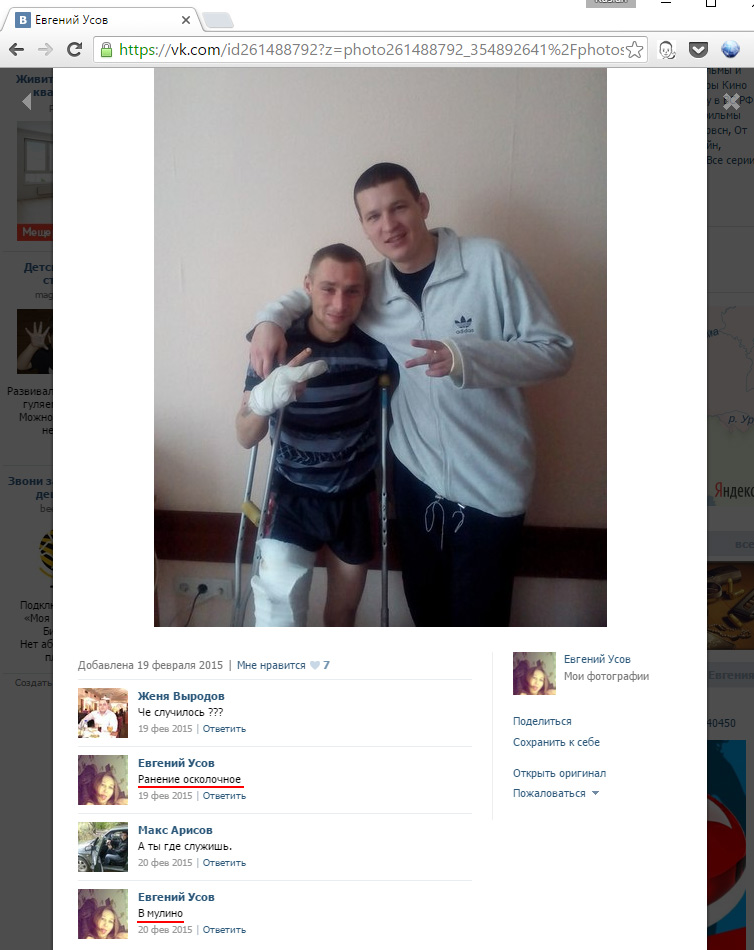
While a soldier can sustain a shrapnel wound due to mishandling weapons or while on maneuvers, we doubt in that case the Defense Minister would have visited him in person and awarded him with a watch. We believe such an honor could only be deserved by fighting in a significant battle. In order to find out what battle Usov was awarded for, we will try to establish the timeline of his injury. First, we will determine where the photos were taken.
Nearly half a year after Usov posted his hospital photos, a paratrooper training center barracks collapsed in Omsk, killing 23 people and wounding 19. Some of the wounded were transported to the Main Military Clinical Hospital named after N. N. Burdenko. On July 24 2015, the injured servicemen, three of which were from Bashkortostan region, were visited by Bashkortostan’s head Rustem Khamitov.
The photos of the visit show elements of the hospital ward’s interior that fully match those in the photo of Usov with Shoigu:
Apart from the identical interior design, the photos also show identical beds, bedside tables and linen patterns.
On February 19, 2015, Usov published a photo of the view from the hospital ward’s window:
VK.com photo
Saved copy
Original photo
In order to make sure the photo was indeed taken from the Burdenko hospital in Moscow, we went there and took a photo with the same line of sight. Burdenko military hospital is guarded and a pass is required to enter, which is why we had to take photos from outside the hospital:
This photo was taken from LUKoil gas station at Gospitalnaya Naberezhnaya in Moscow, camera pointing towards the studies and laboratory building of Moscow’s State Technical University named after Bauman:

We have geolocated the photographer’s (Usov’s) position as the Treatment and Diagnostics building of Burdenko military hospital:

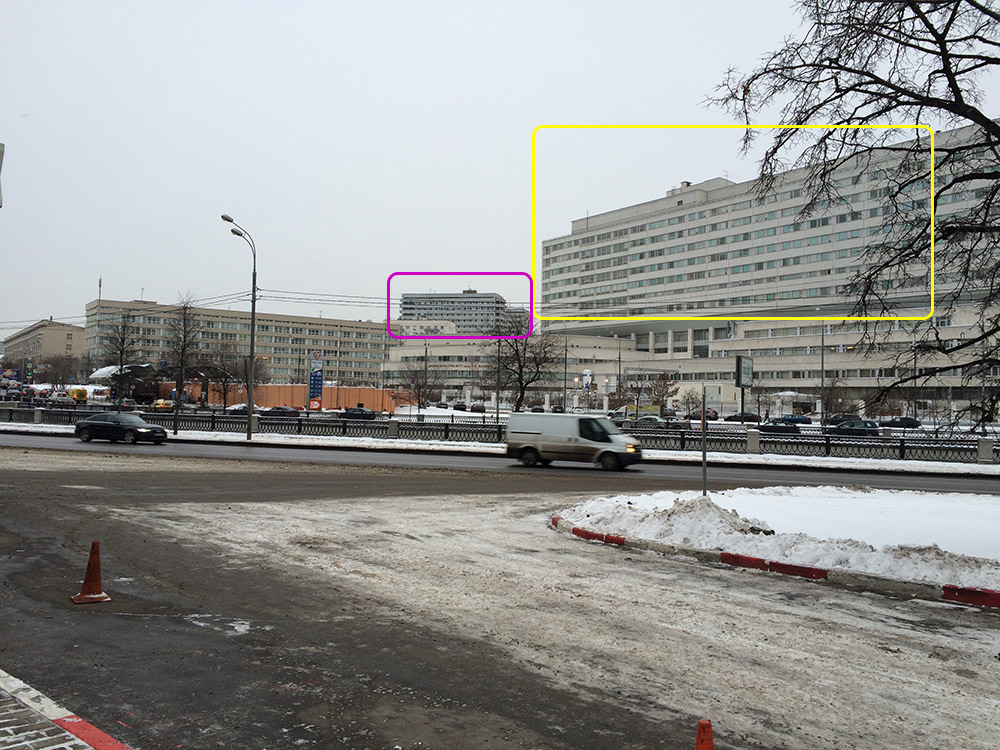

The timeline of Usov’s photos paints the following picture:
— The Debaltseve offensive started on January 22, 2015. Before January 26 and after February 14, 2015, Usov had been actively using vk.com, reposting several posts from various groups on his profile every day. However, during that period he didn’t publish a single post. This suggests he was “absent” during that time and most likely it is then that he was wounded:

— On February 14, 2015, he posted a picture from a hospital ward taken in the Burdenko hospital in Moscow (saved copy);
— No later than February 21, 2015, he was visited by Minister of Defense Sergey Shoigu who presented Usov with a watch with the Russian MoD logo (saved copy, copy of the photo featuring the Minister);
— On February 25 2015, Usov published a photo from inside an ambulance (saved copy):
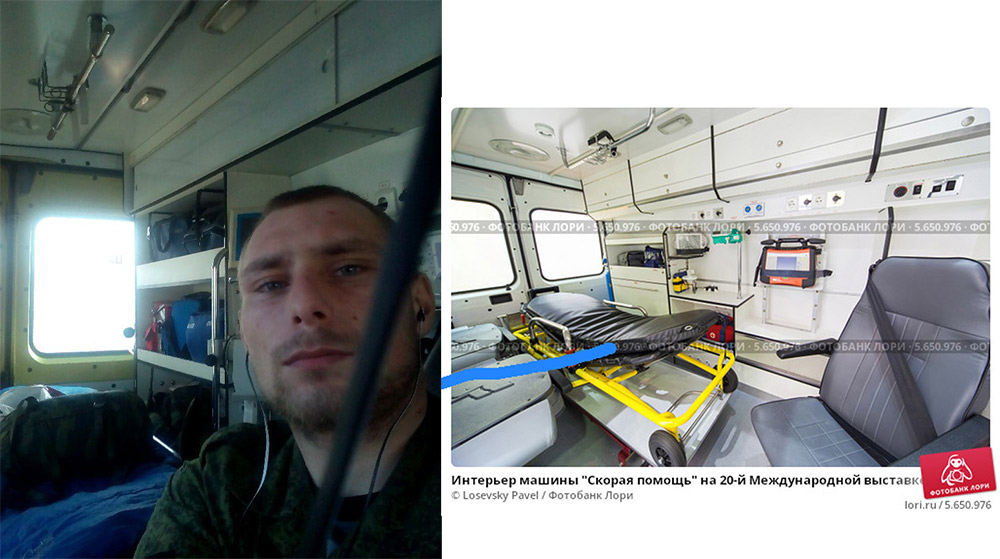
— On March 27 2015, Usov published a photo geotagged at the Khimki cemetery, which is adjacent to the Ministry of Defense medical center (saved copy, Wikimapia link).
Usov’s photos during his treatment show snow, proving that the photos were indeed taken at the time they were published. This is why we believe Usov wasn’t wounded at Ilovaysk, where the 6th brigade was previously known to have fought in during August-September 2014.
What was the major battle fought in late January and early February 2015, for which Usov got a personal award from the Minister of Defense?
That period saw the battle for Debaltseve, which became a bargaining chip in Putin’s talks with Ukraine’s president Poroshenko.
The 6th Tank Brigade in the battle for Debaltseve
As askai707 showed in his investigation, the 6th Separate Tank Brigade used T-72B3 tanks with white circles as tactical markings while fighting in Ukraine:
T-72B3 tanks with the same tactical markings can be seen in some images of the battle for Debaltseve:
https://twitter.com/askai707/status/616535990304440320
“One of the T-72B3 tanks that fought at Debaltseve. April, Rostov region, Russia. Possibly from the 6th separate tank brigade”
https://twitter.com/askai707/status/598227804593991680
“A couple of photos taken in February by Maximillian Clarke of the T-72B3 tanks that fought at Debaltseve”
The 5th tank brigade, the unit of the injured tanksman Dorji Bartomunkuev, used another marking (white square contour) in Donbass and fields earlier T-72 versions, T-72B:
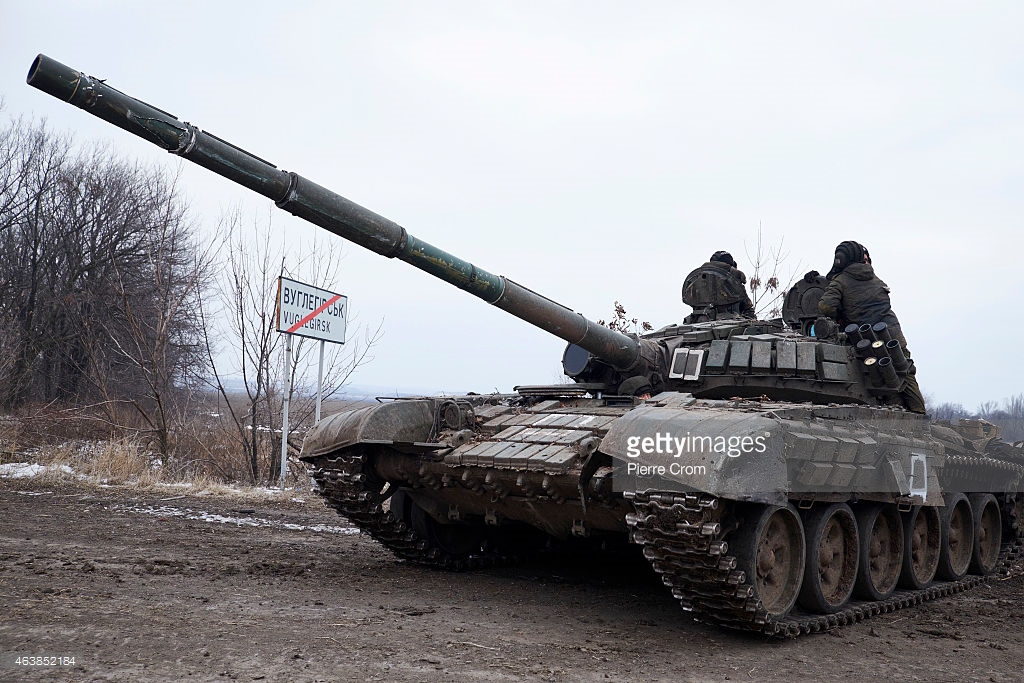
Vuhlehirsk, Ukraine, February 19 2015. T-72B obr. 1984 of the 5th brigade (photo by Pierre Crom/Getty Images).
The 5th brigade hasn’t been using T-72B3 tanks. To tell a Т-72B from a Т-72B3, you can look at the wind sensor of the DVE-BS weather station:
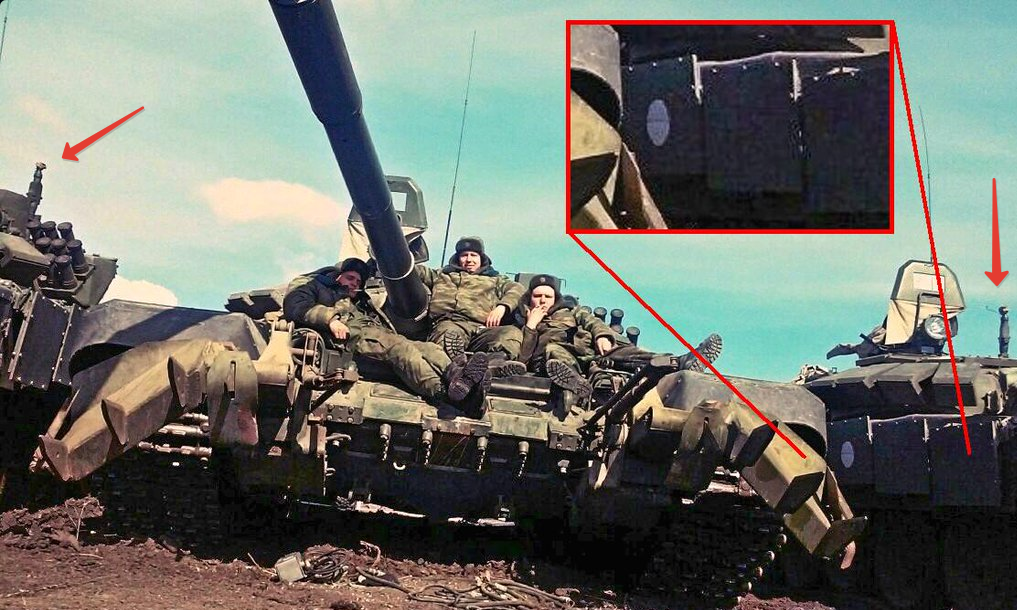
You can read more of the difference of T-72B3 from other T-72 variants here.
On February 15 2015, a pro-separatist military reporter Graham Phillips published a video from Debaltseve showing 3 T-72B3 tanks, each bearing a white circle tactical marking on the side:
Lostarmour.info, a website collecting information on military vehicle losses in Donbass, has photos of a destroyed T-72B3 tank taken on March 25, 2015 near Debaltseve. The website identifies the tank as T-72B3, which is supported by the obvious presence of a Sosna-U thermal sight system:

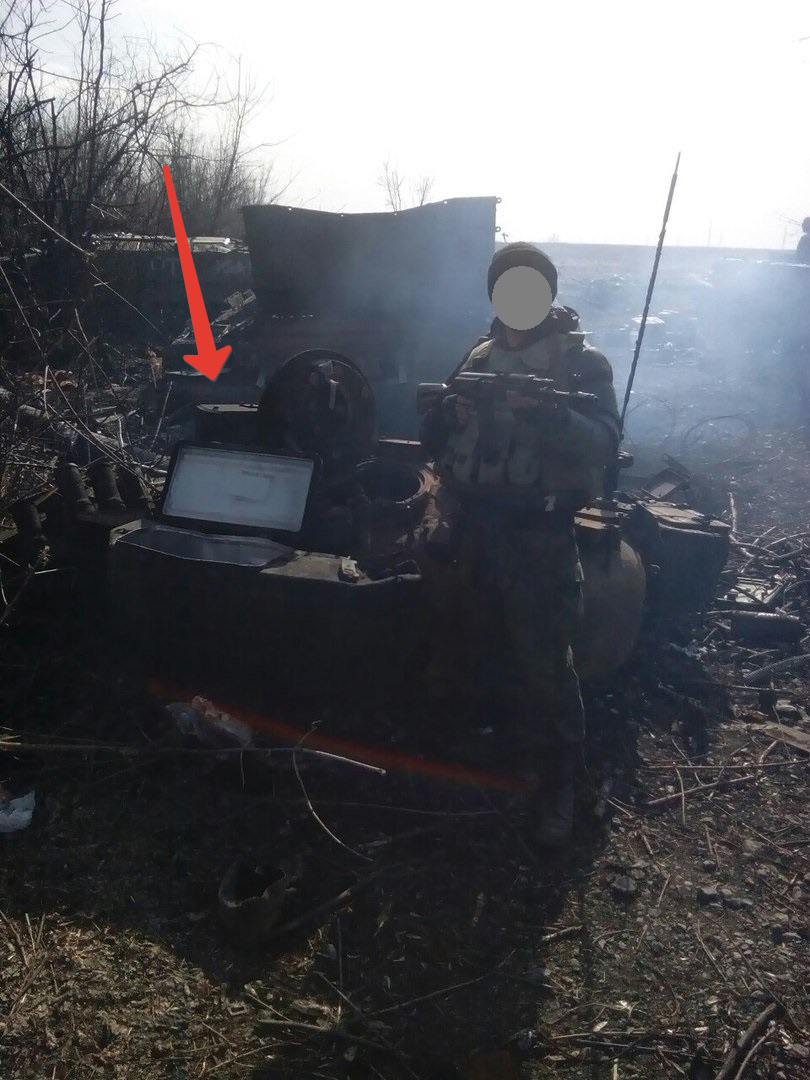
Moreover, you can see “parallel-hinge” tracks used on Т-72B3 tanks (fielded by the 6th brigade) which are significantly different from the tracks of Т-72B tanks (fielded by the 5th brigade):
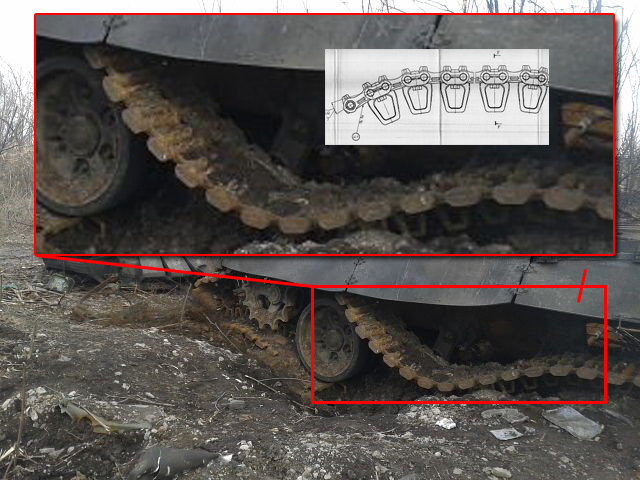
Source for the track schematic image
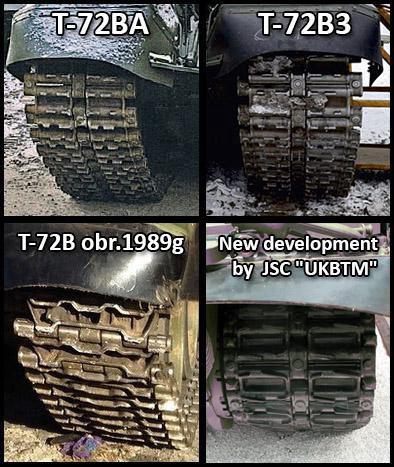
Finally, one of the photos shows a white spot which resembles the 6th brigade’s tactical marking (white circle) and matches the marking’s position on the tank:
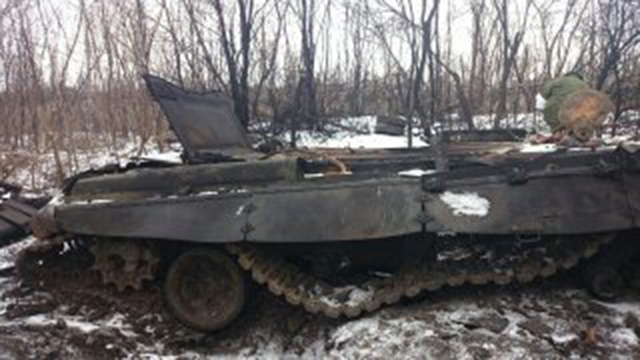
We believe this proves the 6th brigade indeed fought and took losses at Debaltseve in January-February 2015 — during the time period when the brigade’s serviceman Evgeniy Usov got a shrapnel wound.
How often does Russia’s Minister of Defense visit hospitals?
This is a very rare occasion: after he visited Evgeniy Usov, Shoigu’s next visit to a military hospital happened in July 2015 after the Omsk barracks collapse. Before that, Shoigu visited Burdenko hospital with a snap inspection in January 2014; a regional hospital in Ryazan in August 2013; a military hospital in Vladivostok in November 2012.
We believe the gift Russia’s Defense Minister gave to Evgeniy Usov suggests this was the purpose of his visit to the hospital. It is highly unlikely that Usov was awarded for an injury sustained due to an accident or during an exercise, and the fact that the watch was given by the Minister of Defense himself suggests it was given for a very important battle.
Conclusion
After Angela Merkel canceled the Normandy format meeting in Astana and Vladimir Putin wasn’t invited to the 70th anniversary of Auschwitz liberation, a major escalation started in Donbass (mid-January 2015). The main fighting took place around Debaltseve, which is a major transportation hub, giving Donetsk a railway link with Luhansk and Russia. Russia’s 5th and 6th Separate Tank Brigades were proven to have taken part in the battle. During the battle, a serviceman of the 6th brigade Evgeniy Usov got a shrapnel wound and arrived to Moscow’s military hospital named after Burdenko no later than February 14, 2015. No later than February 21, 2015, he was visited by Russia’s Defense Minister Sergey Shoigu, who awarded Usov with a watch bearing a Russia’s Ministry of Defense logo.
We believe the facts mentioned above prove that the decision to escalate the conflict in Ukraine and attack Debaltseve was taken in the highest ranks of the Russian authorities. Given that the Debaltseve offensive started while Russia’s and Ukraine’s presidents were conducting negotiations, it is hard to believe this decision could have been taken by anyone than Russia’s president Vladimir Putin. Such an initiative from Russia’s Minister of Defense could have severely hampered Putin’s negotiation efforts, which is why we believe that the decision to attack Debaltseve and close a pocket around Ukrainian forces was personally taken by Russia’s President Vladimir Putin. This decision was a reaction to the actions of the Normandy Four and was used as leverage against Ukraine’s President Petro Poroshenko and leaders of the West.
Support our team
Our team’s work requires a lot of resources, which is why we need your support. We continue our fundraising effort which we announced in November 2015. You can support our team at the donation page or through the form below:
